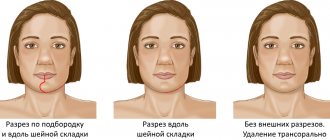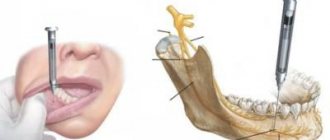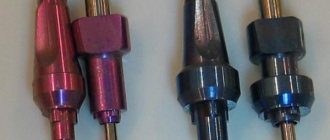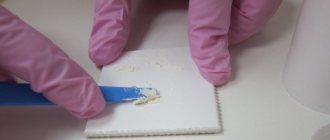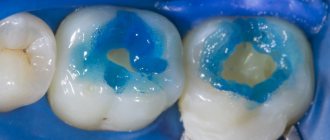In order for the wound surface to shrink faster, it is necessary to create favorable conditions for the regenerative process to occur. They can be ensured by wound drainage performed in a manner appropriate to the type of injury. It is not always performed, but only according to the surgeon’s indications. Based on modern medical concepts, the drainage process, depending on what type was chosen, should clear the damaged surface of blood clots, thereby eliminating the possibility of infection and the entry of pathogenic microorganisms into the wound.
Manipulation helps to tightly connect the separated wound surfaces, thus stopping capillary and vascular bleeding and to clean and disinfect the damage before applying a bandage. Wound drainage is a therapeutic and prophylactic technique used in surgery to create an unfavorable environment for the development of infectious infection in the wound by maintaining the removal of discharge from the damaged area and monitoring the healing process.
Moshe Shine
The history of abdominal drainage is as old as surgery itself (1). However, abdominal drainage is still a subject of debate and constant discussion. Even 100 years ago there were passionate proponents of drainage, like Robert Lawson Tait (1845-1899), who said: “When in doubt, drain!” There were also skeptics, like JL Yates (1905), who said: “Drainage in general peritonitis is physically and physiologically impossible”! There were also those like Joseph Price (1853-1911): “There are people who ardently defend drainage, and there are those who categorically deny it. Both are right in their own way.”
100 years have passed, during which operative surgery and supportive care have progressed continuously. But what about drainage? Are there fewer discussions and contradictions today? What awaits drainage tomorrow?
In this short post I try to answer these questions from the perspective of drainage for abdominal and abdominal infections. Elective surgeries will be mentioned only as part of the discussion. Percutaneous drainage, both primary and postoperative, is outside of our discussion.
Drainage classification
Drains are installed for therapeutic or preventive reasons.
Medicinal:
- To ensure the outflow of intra-abdominal fluid or pus (periapendicular abscess, diffuse peritonitis).
- To control the source of infection if it is impossible to remove it by other, radical methods; for example, with an external intestinal fistula (duodenal stump).
- Preventive:
- To prevent recurrence of infection - to evacuate residual serous fluid or blood, prevent the formation of an abscess.
- To monitor expected or probable leakage from the suture line (colic anastomosis, duodenal stump, cystic duct).
- To report complications (in the hope that drainage will work in case of bleeding or leakage of chyme from the anastomosis).
It is better, rather than discussing a rigid classification, to look at the problem of drainage through the eyes of a general surgeon. What are the common tactics? What is the practice for general surgery?
The literature is a poor source of information about how common abdominal drainage is in emergency surgery. Analyzing several publications from individual clinics or collective reviews on drainage for specific conditions, we cannot draw a conclusion about the dominant trends. Therefore, we present the opinions of general surgeons - members of SURGINET - and the results of an international Internet discussion (2) regarding their views on abdominal drainage. Of the 700 members, only 70 responded. Although this is quite small, it correlates with the frequency of Internet responses received for any online survey.
The survey involved 71 respondents, all general surgeons, many of them not academic specialists, but earning their bread and butter through practical work, from a total of 23 countries. Most of all (14) are from the USA, and in total from North America - 18, Western Europe - 10, Eastern Europe - 7, Asia - 15, including Israel and Turkey; Latin America – 15, Australia and South Africa – 3 each.
Surgeons who are active in the Internet survey are, as a rule, more interested, active, and familiar with the literature and modern practice in other activities. The survey results reflect inconsistencies and geographic differences in their surgical practices.
Common situations where drainage may be used
Indications
Drainage is installed if it is necessary to ensure the outflow of transudate discharged from the wound into the external environment. Drainage is necessary if there is inflammation of an infectious nature or conditions that cause the wound surface to become inflamed and pus to appear in it.
The technique is also used when it is necessary to remove localized accumulations of blood clots, lymph, purulent and bile secretions from a damaged surface and in order to control the regeneration process. In addition, surgeons often resort to drainage if there is a risk of bleeding after surgery.
Acute appendicitis
In table Figures 1 and 2 summarize the surgeons' responses. “Simple” or “phlegmonous” appendicitis was excluded. Only complicated forms are discussed: when the appendix is black, there is usually some fluid in the pelvis, but it is not obvious pus. As follows from the table. 1, only one respondent drains the cavity in this situation. Next, when the appendix is perforated, a laparotomic or laparoscopic surgeon removes the appendix and sucks out the pus present around the appendix. In these cases, the surgeon can destroy the barrier of the omentum or loops of the small intestine, exposing a small abscess of a few cubic millimeters, and the pus is also aspirated. Table 2 shows that 80% of respondents do not install drainage in this situation. However, there is no geographical pattern. Table Figure 3 illustrates advanced cases where perforated appendicitis is combined with a “pus everywhere” situation - in the pelvis, along the right lateral canal, even in the upper floor. And, although 80% of surgeons do not install drainage in this situation, there is a geographic dependence: they never or almost never drain the abdominal cavity in North and Latin America, and quite often in the Asian world. This depends on how the surgeon views the role of drainage in the treatment of diffuse peritonitis; complications will be discussed later.
Table 1. Do you place drainage after appendectomy for gangrenous appendicitis?
| Quantity | No | Yes | |
| North America | 18 | 18 | |
| Western Europe | 10 | 10 | |
| Eastern Europe | 7 | 7 | |
| Latin America | 15 | 15 | |
| Asia | 15 | 14 | 1 |
| Australia | 3 | 3 | |
| South Africa | 3 | 3 | |
| Total | 71 | 70 (98%) | 1 |
Table 2. Do you place drainage for perforated appendicitis, when there is little pus and it is present locally?
| Quantity | No | Yes | |
| North America | 18 | 14 | 4 |
| Western Europe | 10 | 8 | 2 |
| Eastern Europe | 7 | 6 | 1 |
| Latin America | 15 | 11 | 4 |
| Asia | 15 | 12 | 3 |
| Australia | 3 | 3 | 0 |
| South Africa | 3 | 2 | 1 |
| Total | 71 | 56 (78%) | 15 |
Table 3. Do you place drainage for perforated appendicitis with diffuse spread of pus?
| Quantity | No | Yes | |
| North America | 18 | 18 | — |
| Western Europe | 10 | 8 | 2 |
| Eastern Europe | 7 | 5 | 2 |
| Latin America | 15 | 14 | 1 |
| Asia | 15 | 7 | 8 |
| Australia | 3 | 2 | 1 |
| South Africa | 3 | 1 | 2 |
| Total | 71 | 55 (77%) | 16 |
Special precautions for you or your helpers
If you need help changing the dressing, your assistant should be aware of some precautions:
- If you are receiving chemotherapy, your assistant should wear gloves when emptying the bag. Wearing gloves will help prevent exposure to chemotherapy drugs. Gloves should always be worn when coming into contact with secretions of other people.
- At least two people should be aware of how to help you change the bandage.
CHANGING THE NEPHROSTOMY DRESS: AFTER INSTALLING A NEW NEPHROSTOMY TUBE
Necessary materials:
- Ready wound sticker or gauze pad
- Sterile physiological 0.9% sodium chloride solution
- Plastic bag for old bandage
- Gloves
- Treatment wipes for leather treatment
- Sterile gauze pad
- Adhesive plaster or special sticker on the wound
Important : Sometimes, to stabilize the nephrostomy tube, a plastic platform is placed where the tube exits the skin. Ask your doctor how to use this device.
PROCEDURE
- Wash your hands thoroughly with soap and water.
- Put on gloves
- Prepare the necessary materials
- Remove the old dressing carefully. Throw the bandage and gloves into a plastic bag.
- Wash your hands. Wear clean gloves. Clean the skin and tube site with gauze soaked in saline solution. Start where the tube exits and work outwards in a circular motion to cover a circle approximately 10-12cm in diameter. Throw away the gauze. Allow the tube area to dry. Apply antiseptic (chlorhexidine) around the tube.
- Cover the tube site with a sterile gauze bandage or a special sticker.
Secure the tube with a sticker at a distance of 7 cm from where the tube exits. Remove your gloves and throw them away. Wash your hands.
Drainage for acute appendicitis
In 1979, O'Connor and Hugh, in an excellent review, concluded: “Intraperitoneal drainage is of little value in phlegmonous, gangrenous, or perforated appendicitis. However, drainage is indicated if there is a limited purulent cavity or a gangrenous stump that is imperfectly closed” (1).
I will not overwhelm you with details of all the available literature, since Petrowsky et al. recently released an excellent analysis of these studies (3). After presenting individual studies, including their own meta-analysis, the authors concluded that “drainage does not reduce the incidence of postoperative complications, and even appears to be harmful in terms of the formation of intestinal fistulas (the latter was observed only in drained patients). Drainage should be avoided in any form of appendicitis” (4).
Drainage after appendectomy for phlegmonous and gangrenous appendicitis is not needed. Most surgeons who took part in the survey understand this. What is said about perforated appendicitis with local formation of a purulent focus? Of our respondents, 22% will install drainage. As will be shown below, a “formed” or “unopened” abscess, according to most surgeons, is a good indication for installing drainage. But an abscess against the background of perforated appendicitis is not “unopened”: after the surgeon destroys its wall and evacuates the pus, the potential abscess space is filled with nearby loops of intestine, mesentery and omentum. Thus, the source of infection is removed, the abdominal cavity is cleaned by toileting. The peritoneal defense mechanism is then activated, supported by a short course of antibiotics, with complete eradication of bacteria without the presence of an irritating foreign body (4).
Uncertain closure of the appendiceal stump as a justification for drainage seems anachronistic. Safe closure is possible even in rare cases where perforation occurs at the base of the appendix, by placing a suture or stapler on the dome of the cecum.
Of our respondents, 23% use drainage for appendicitis complicated by diffuse peritonitis. However, as will become clear later, these are the same surgeons who advocate drainage for generalized intra-abdominal infection. And drainage in this situation - after controlling the source of infection - seems useless.
Principles of staging
The basic principles of drainage installation are presented:
- Installation of drainage systems in the sloping area of the wound cavity.
- Fixing the drainage device.
- By creating such conditions that the drainage does not come into contact with important anatomical formations, represented by nerve endings, vascular network and tendon apparatus.
- Minimizing complications after the procedure.
- Preventing depressurization of the wound cavity and compression of tissues with their damage.
- Minimizing the penetration of pathogenic microorganisms into the cavity through drainage tubes.
Acute cholecystitis
Nowadays, the surgeon often performs “difficult” laparoscopic cholecystectomy (LCE) in patients with advanced acute cholecystitis. The preparation is not easy, the time is considerable, and the discharge from the liver causes outrage. To complete the procedure, a transition to laparotomy is possible. The question remains: is it reasonable to leave drainage in the area of the gallbladder bed or under the liver? A third of respondents will answer “YES” (Table 4). Please note that the emphasis in the question was on the expression “routine drainage”. Many respondents leave it selectively, in case of unfavorable closure of the cystic stump or in anticipation of active exudation.
Table 4. Do you place drainage after open cholecystectomy (OCE) or LCE for severe acute cholecystitis?
| Quantity | No | Yes | |
| North America | 18 | 12 | 6 |
| Western Europe | 10 | 8 | 2 |
| Eastern Europe | 7 | 1 | 6 |
| Latin America | 15 | 14 | 1 |
| Asia | 15 | 7 | 8 |
| Australia | 3 | 2 | 1 |
| South Africa | 3 | 3 | |
| Total | 71 | 47 (66%) | 24 |
CHANGING THE DRESS AROUND THE NEPHROSTOMY TUBE WHEN THE SITE OF THE INSERTED TUBE IS ALREADY HEALED
Necessary materials:
- Gauze wipes or special stickers
- Plaster or special stickers
- Antiseptic (chlorhexidine)
- Gloves
REPLACEMENT TECHNIQUE
- Wash your hands thoroughly. The helper should also wash their hands.
- Gather the necessary tools. The assistant must wear gloves.
- Carefully remove the old bandage and throw it into a plastic bag.
- Clean the area around the tube with liquid soap and water. Rinse the area as well and then pat dry. Treat with an antiseptic.
- Place gauze pads or special stickers over the tube site.
- Look at the nephrostomy tube while you are sitting or standing; check the tube kinks. If there are kinks or no urine flow, reposition the tube.
- Tape the nephrostomy tube to the skin below the dressing (about 7-8 cm from the exit site).
- Remove your gloves and throw them away. Wash your hands.
When changing the nephrostomy tube, it is necessary to inspect the tube entry site. If the area is dry and intact without bleeding, continue with your normal care of showering and changing the bandage. When there is bleeding or infection, contact your doctor for advice on how to treat the area.
Drainage after cholecystectomy for acute cholecystitis
A large prospective randomized study in 1991 and a meta-analysis of 1920 patients (ACA) summarized 10 similar studies. It was shown that when comparing patients with and without drainage in terms of mortality, reoperation or drainage due to bile accumulation, there were no differences. Wound infection more often accompanied patients with drainage (5). Thus, on the eve of the end of the era of BCI, routine drainage - the sacred cow of biliary surgery - was abandoned in many centers.
What is the trend in emergency LCE? In a recent study of Australian surgeons, drainage was left routinely in 1/3 of cases (6). Another small randomized trial comparing patients with and without drainage for LCE examined the effect of drainage on postoperative pain and nausea, in terms of gas removal, and found no difference (7). If routine drainage is pointless in ACE, why is it indicated in LCE? Therefore, Petrowsky et al. (3) drainage is not recommended for both ACE and LCE. In a prospective study of 100 patients who underwent LCE for acute cholecystitis, all of them underwent cholescintigraphy one day after surgery. Bile leakage was detected in 8, but all of them were asymptomatic (8). Most postoperative collections, be it bile, serous fluid or blood, remain asymptomatic, the fluid is absorbed by the peritoneum and this is well known from ultrasound studies since the time of AChE.
Drainage is much more effective at removing bile than stool or pus. Therefore, it is logical to leave a drain if the surgeon is concerned about possible bile leakage. For example, if a subtotal cholecystectomy is necessary, or when there are difficulties with sealing the cystic duct, or there is a suspicion of additional bile ducts in the area of the gallbladder bed, which manifests itself in the form of bile leakage from the surface of the bed.
Thus, although most patients do not require drainage, if the surgeon is concerned about possible bile leakage or excessive serous fluid, drainage is appropriate. In most cases, almost nothing is separated through such drainage. It is extremely rare that preventive drainage becomes therapeutic in the case of profuse and persistent bile leakage. In cases where the need for an existing drain is questionable, it is extremely important to remove it as soon as possible. “Dry” drainage for 24 hours indicates that it has served its role. Finally, Howard Kelly (1858-1943) said: “Drainage is the recognition of defective surgery.” Clinicians must be careful not to confirm this statement in practice: if it is safer to switch to an open procedure and carefully close the ultrashort cystic duct than to rely on questionable clip closure and safety drainage, then the choice is clear.
Peculiarities
Wounds, especially those with a purulent etiology, need proper therapy. In order for the cavity to heal faster and the pus to disappear completely, it is necessary to install drainage.
Drainage is divided into types. If the patient is in a supine state, then the drainage system is installed at the lowest point so that the contents from the cavity flow out independently under the force of gravity.
Passive drainage can also be used. It will absorb the liquid contents of the wound. But since it is weakly effective, it is used infrequently.
With the help of active drainage, the wound can be treated with antiseptic and anti-inflammatory drugs, and the purulent contents can be removed mechanically.
Drainage can be made of plastic, glass, rubber and gauze. The device most often has different sizes and diameters, selected based on the depth, width and type of wound.
For drainage to be effective, it must be selected individually for each wound surface. It also needs to be positioned correctly, and the materials for its creation must be selected so that they correspond to the sensitivity of the microflora.
Drainage of cavities is carried out during the inflammatory process. Once the cavity is cleaned and begins to heal, the drainage must be removed. It is also worth removing the device when an inflammatory process begins around it.
When installing drainage, it is necessary to observe all aseptic measures, since through drainage tubes or holes, not only transudate can escape, but also pathogenic microorganisms can enter the wound cavity.
Failure to install drainage will lead to accumulation of transudate in the cavity. The wound healing process always depends on many factors and, in the absence of a drainage device, can lead to an inflammatory purulent process.
If it starts, or a hematoma forms in the wound, the scar will take much longer to form, and healing will be more difficult. It is for this reason that if there are indications for drainage, you should not refuse it. Don't risk your health and always follow your doctor's orders.
Drainage after omentopexy for perforated ulcer
If you have performed perfect suturing of a perforated ulcer with tomponade with an omentum, is drainage necessary? 80% of respondents said “no” (Table 5).
Table 5. Will you leave drainage after suturing a perforated ulcer with tomponade with a strand of omentum?
| Quantity | No (%) | Yes (%) | |
| North America | 18 | 17 | 1 |
| Western Europe | 10 | 9 | 1 |
| Eastern Europe | 7 | 3 | 4 |
| Latin America | 15 | 13 | 2 |
| Asia | 15 | 9 | 6 |
| Australia | 3 | 3 | |
| South Africa | 3 | 3 | |
| Total | 71 | 57 (80%) | 14 |
Literature data is limited. Pai et al. [] in their message are the most informative. In the treatment of peritonitis, multiple drainage does not reduce the incidence of intra-abdominal fluid accumulation and abscess formation, nor does it improve postoperative results. Depressurization of the sutured hole was observed in 4 patients with drainage (5.3%) and 1 without drainage (2.3%). They all died. The wound around the drainage festered in 10% of patients. One required laparotomy to free a loop of small intestine that was twisted around a tube. Another developed bleeding from a drainage hole. Based on their own experience and literature data, Petrowsky at al found that “suturing a perforated ulcer with tomponade with an omentum is safe without prophylactic drainage; routine drainage cannot be recommended” (3).
Suturing with tomponade with an omentum, properly performed and tested by injecting colored liquid through a probe, prevents leakage. In addition, when leakage develops, the presence of a drain is not helpful (9). Duodenal lateral leakage is a very serious complication and is almost impossible to control with simple drainage. To stop, relaparotomy and gastric resection according to B-2 are indicated. or, at a minimum, transfer of the “side” duodenal fistula to the “end” one (Gastroenteroanastomosis + tubular duodenostomy, or disconnection of the duodenum). Excessive reliance on drainage when leakage has developed delays vital surgery and hastens death.
What can we say about laparoscopic suturing, an increasingly popular procedure? Does this change the indication for drainage? Leakage after omentopexy is so rare that even comparison of very large series of open and laparoscopic operations does not allow reliable conclusions to be drawn. However, surgeons who have used open omentopexy have alarmingly reported leakage rates of 6–16% after laparoscopic closure (10). This may be due to a “learning curve” - the inability to feel the tension of sutures and tissues, in particular the packing omentum. Therefore, the laparoscopic approach may be more prone to leakage from the sutured opening. I'm still amazed when I see drainage being used to prevent disaster. I find this unlikely. A surgeon who knows how to suture safely does not need drainage. But for a surgeon learning laparoscopic closure (with a small number of peptic ulcers, your learning curve can take forever) drainage may be allowed. It will not prevent reoperation if leakage has occurred. But it can provide early diagnosis when leakage requires re-intervention. However, a timely contrast study (with or without CT) will provide more information than an often poorly placed and unproductive drain.
Types
Drains can be represented by strips of latex, made of rubber, silicone, vinyl chloride, fluoroplastic and Teflon. Sometimes drainages made of gauze folded in several layers are also used, but since they have a short operating time, they are used infrequently. Rubber drainage also has shortfalls. It is quickly delimited by fibrin formed in the wound, adhesions of the epidermis and deep tissues in which it is installed.
At the moment, surgeons prefer complex drainage systems, represented by multi-lumen, cuff, rubber-gauze, T-shaped and fan types. The general requirements for drainage are softness, smoothness, strength and transparency of the material. Also, all drains must be radiopaque.
Emergency colon surgery
Issues of drainage after emergency resection of a perforated sigmoid without or with primary anastomosis should be considered together. In both cases, control of the source of infection is provided by colectomy. The reason for drainage can be twofold - therapeutic (to help in the treatment of concomitant intra-abdominal infection) or prophylactic (to prevent the accumulation of fluid or to control the incompetence of the suture line of the anastomosis or rectal stump). About 60% of respondents (Tables 6 and 7) do not routinely drain the abdominal cavity in this situation.
The topic of drainage after left hemicolectomy with or without anastomosis has been discussed for 30 years. Proponents claim that drainage prevents reoperation in case of suture failure. Critics argue that the drainage itself causes failure. It is difficult to determine the validity of the 8 studies by Petrowsky et al. [], which included emergency and elective patients, with and without drainage. All 8 studies showed no difference in postoperative complications with or without drainage, but some authors reported a high incidence of wound infection with drainage. They talk about small advantages of not draining in relation to leakage. This confirms an earlier meta-analysis by Urbach et al. [], who concluded that “there is no significant benefit from routine drainage of intestinal or rectal anastomoses in terms of reducing the incidence of leaks or other complications.” The same authors reported that "20 observed leakages among all 4 studies that occurred in patients with drainage, in only 1 case (5%) did pus or intestinal contents actually appear through the drainage." Even overly cautious authors conclude that “there is insufficient evidence to show that routine drainage of colorectal anastomoses prevents anastomotic or other complications” (12).
Table 6. Do you place a drainage during the Hartmann operation against the background of cancer perforation or sigmoid diverticulum?
| Quantity | No | Yes | |
| North America | 18 | 15 | 3 |
| Western Europe | 10 | 8 | 2 |
| Eastern Europe | 7 | 2 | 4 (1 did not operate on the intestine) |
| Latin America | 15 | 12 | 3 |
| Asia | 15 | 6 | 9 |
| Australia | 3 | 1 | 2 |
| South Africa | 3 | 3 | |
| Total | 71 | 47 (66%) | 24 |
Table 7. Do you place drainage during colectomy and primary anastomosis due to cancer perforation or sigmoid diverticulum?
| Quantity | No | Yes | Comments | |
| North America | 18 | 14 | 3 | 1 (never performed primary anastomosis) |
| Western Europe | 10 | 5 | 5 | |
| Eastern Europe | 7 | 2 | 3 | 1 (did not operate on the intestine); 1 (never performed primary anastomosis) |
| Latin America | 15 | 10 | 4 | 1 never performed a primary anastomosis) |
| Asia | 15 | 3 | 11 | 1 (never performed primary anastomosis) |
| Australia | 3 | 1 | 2 | |
| South Africa | 3 | 3 | — | |
| Total | 71 | 43 (60%) | 28 |
The surgeon decides to drain in this situation for the following reasons:
1. Combating residual or preventing recurrent intra-abdominal infection by removing exudate or draining a peri-intestinal abscess discovered or already drained during the operation. The futility of such drainage in terms of achieving the stated goal has already been discussed in the section on acute appendicitis.
2. Drainage of the area of future possible anastomotic leak. However, the high risk and tendency of the anastomosis to depressurize are circumstances that are not suitable for anastomosis in an emergency situation. In addition, drainage does not help with leakage, not to mention the false sense of security in the absence of discharge through the drain (13). Only a pathological optimist can assume that feces will be released through the drainage and the tube will not become clogged with fibrin. In conclusion: drainage after emergency colon resection is a waste of time.
Drainage for diffuse peritonitis
With diffuse peritonitis, only a third of respondents drain the abdominal cavity (Table 8).
Table 8. Will you drain the abdominal cavity with diffuse peritonitis?
| Quantity | No | Yes | |
| North America | 18 | 17 | 1 |
| Western Europe | 10 | 8 | 2 |
| Eastern Europe | 7 | 2 | 5 |
| Latin America | 15 | 12 | 3 |
| Asia | 15 | 5 | 10 |
| Australia | 3 | 2 | 1 (pelvis only) |
| South Africa | 3 | 1 | 2 |
| Total | 71 | 47 (66%) | 24 |
The distribution of answers here is identical to questions 3, 5, 6, 7. Asia and Eastern Europe believe in the value of drainage for local and diffuse intra-abdominal infection. There are no comparative studies of drainage and non-drainage in diffuse peritonitis, since the futility of drainage in this situation was established many years ago by experts in surgical infection. The modern view, presented by the Society for Surgical Infection, is formulated by Rotstein and Meakins []: “It is impossible to drain the abdominal cavity with generalized peritonitis. Therefore, the use of drainage in these patients is not indicated, except in cases where (1) drainage is used for postoperative lavage; (2) drainage is placed in the cavity of a well-confined abscess; (3) drainage is used to form a controlled fistula.”
I remember when I was a junior resident, post-op patients would have rubber drains sticking out of every quadrant of their distended abdomen. These tubes produced some old blood, or perhaps some pus or foul-smelling fluid. When such a patient died, the cause was often given as pneumonia. How stupid we were! We believed that these drainages could be useful! Gradually we came to the understanding that they were worthless: all intra-abdominal drainages became clogged with surrounding tissue within 24-48 hours.
The only indication for the use of drainage for generalized peritonitis is control over an uncontrolled (unremovable) source of infection, such as failure of the duodenal stump or esophagogastroanastomosis. I am skeptical about the term “well-confined abscess” or “formed abscess” as an indication for peritoneal drainage. Such abscesses accumulate pus and are part of diffuse peritonitis. Once evacuated, they should be treated as part of the infected abdomen, along with other peritoneal measures and antibiotic therapy. Of course, peritoneal lavage is a thing of the past.
In conclusion, it is important to understand that drainage for diffuse peritonitis is pointless. However, recurrent or persistent intra-abdominal infection may develop, requiring percutaneous drainage or reoperation. Drainage will not replace this. And the fact that you do not have a CT scan at hand should not change the indication for drainage, as will be shown below.
Obligate drainage
In what situations is drainage necessary? Each respondent answered this question according to his own understanding (Table 9). From a purely practical point of view:
1. In the first place, and this is true, is the possibility of leakage of bile or pancreatic juice. These fluids are easily collected and evacuated by drainage, which, when installed in cases of biliary and pancreatic leakage, can be life-saving and have a therapeutic effect.
2. The second indication is an abscess containing pus. Some surgeons believe that a well-formed cavity containing pus requires drainage. Many respondents attach importance to terms such as “undrained abscess” or “thick-walled abscess” as an indication for drainage. I'm surprised that such abscesses are actually found in the abdominal cavity!
3. The third general point is insufficient control over the source of infection. A variety of indications appear here, such as bile leakage, urination, the impossibility of forming a full-fledged external fistula of the duodenum or jejunum without an intermediate cavity, which is quite reasonable.
4. Difficult duodenal stump – danger of incompetence after gastric resection according to B-2.
5. Other situations such as the danger of urination, the danger of leakage of the esophageal suture line, which is also reasonable. Regarding the danger of possible bleeding, which, as a rule, is unnecessary and is rarely performed. Even with significant bleeding, this is just the tip of the iceberg.
Table 9. In what situation will you install drainage?
| Situations | Number of respondents | Comments | |
| 1. | High probability of leakage of bile or pancreatic juice | 37 | |
| 2. | Proven abscess containing pus | 31 | Many people attach importance to “thick walls” or “an abscess that has not collapsed” |
| 3. | Lack of satisfaction from complete “source control” | 11 | Some say: "when I expect expiration" |
| 4. | Difficult duodenal suture line | 6 | |
| 5. | High chance of urine leakage | 4 | |
| 6. | Esophageal suture line | 2 | |
| 7. | Expected bleeding | 3 | Typically drain for 24-48 hours |
How to shower
You can shower every 48 hours after the tube is in place, but the tube site must be kept dry. You can protect the bandage with a plastic covering attached to your skin, so your bandage is completely covered.
The tube site should remain dry for the next 14 days. After this time, as the area heals, you can shower without a bandage or plastic covering.
The tube site should be cleaned with soapy water and water and rinsed well. A disposable cloth should be used to clean the area. Bathing or swimming is not recommended while the tube is in place.
How to drain?
The authors' answers are very varied, especially taking into account the different manufacturing companies. Most indicate that drainage can be active (a round tube connected to a suction) or passive (a tube or flat drain operated by gravity). Table 10 shows that 60% of respondents prefer “active” drainage. North Americans prefer active drainage exclusively. Others use mixed drainage - tubular, wrinkled or Penrose drainage.
Which drainage is better? The different types of drains and their characteristics have been described in detail by O'Connor and Hugh []. It is desirable that the drainage be soft and elastic to minimize the real danger of compression necrosis of the intestine or its mesentery. Passive drainage works due to capillarity, gravity or pressure difference. Active drainage is connected to suction. Passive drainage is considered as an open system, which is associated with contomination of the wound drainage channel due to the retrograde spread of bacteria on the skin surface (“drainage drains in both directions”). Many authors believe that passive drainage is not effective in the upper abdominal cavity due to the negative intrathoracic pressure that occurs during breathing (1), others disagree (15).
Active drainage tends to become clogged with aspirated tissue or clots. High suction pressure blocks drainage. Double-lumen drainage is more resistant to blockage, but it usually consists of a rigid material and does not provide safety during prolonged standing in the abdominal cavity. Interestingly, a study of drainage after cholecystectomy showed that simple passive drainage was 2 times more effective than simple active suction drainage, and double-lumen drainage was more effective than passive one (15).
Flat and soft active are the only drains I use in the abdominal cavity, usually in rare cases of complex cholecystectomy. I will use these same drains in other situations, for example, when expecting a biliary or pancreatic fistula. Surgeons who use active drainage know that after a few hours it becomes clogged with fibrin and pus. And open passive drainage will act as a one-way highway (inward) for skin bacteria. As for surgeons who leave a drain near the colonic anastomosis, I would be surprised to learn that they rely on a tubular active drain to aspirate the feces. To remove it, a large passive tube (wrinkled drainage) with a significant (2 fingers) incision in the skin and abdominal wall is required. But in this case, complications such as a drainage hernia, acute intestinal obstruction, bleeding and abscess of the drainage canal are possible. For various drainage complications, see table. eleven.
Table 11. Complications of intra-abdominal drainage and their prevention.
| Complications | Complications |
| "Drainage temperature" | Loss of drainage (slipping under the fascia or breaking) |
| Drainage channel infection | |
| "Drainage hernia" | "Lost drainage": migration into the abdominal cavity or "fragmentation" |
| Bleeding from the drainage channel | |
| Intestinal obstruction | Contamination of sterile tissues |
| Gut erosion | Obstacle to fistula healing |
These complications are real. Some are rare. But I have experienced each of them during the “dark period” of my career. Many can be prevented by careful handling of drains (Table 12), but the best way to prevent drainage complications is to avoid them when drainage is not indicated. The majority of residents indicate that they now drain the abdominal cavity less frequently than they previously did during the initial period of their surgical career (Table 13).
Table 12. Installation and management of drains
Introduction of drainage
- I choose the appropriate drainage according to the situation, but in general the softest and smallest in diameter.
- I install it strictly in the required area, trim the excess length, but leave it with some sagging.
- I place drainage away from the intestinal wall or vessels
- I try to place the omentum between the drainage and vital structures to avoid erosion
- I place the drain away from the main wound to prevent wound infection.
- I plan the shortest route for drainage placement, depending on the indications and type of drainage.
- When suturing the main wound, do not catch the drainage into the suture without fixing it to the fascia.
- Fix the drainage to the skin using a suture.
Control
- I use a closed system whenever possible
- I use low vacuum to prevent suction of nearby tissues to the drainage hole
- I take care of small-diameter tubes by rinsing them twice a day with a small amount of saline solution under sterile conditions.
- When a fistula has formed (eg, a biliary fistula), suction should be stopped and passive drainage by gravity should be used.
Removal
- I remove the drainage as soon as it stops working or performing its preventive function.
- Removal of long-standing drainage should be carried out in stages, “step by step” to prevent the formation of deep interstitial abscess
- Removal or shortening of the drainage can be carried out under ultrasound and CT control.
- If the drain is shortened, it must be reattached to the skin to prevent proximal migration.
Table 13. Do you drain more often now than at the beginning of your career?
| Quantity | Less or much less | More or also | |
| North America | 18 | 18 | |
| Western Europe | 10 | 7 | 3, "Never in Large Numbers" (1) |
| Eastern Europe | 7 | 6 | 1 |
| Latin America | 15 | 15 | |
| Asia | 15 | 13 | 2 |
| Australia | 3 | 3 | |
| South Africa | 3 | 3 | |
| Total | 71 | 67 (95%) | 4 |
Kinds
Drainage can be passive, flow-flushing or active.
Types of drainage (source https://studfiles.net/preview/4603856/page:16/)
Passive
Passive drainage is currently carried out using perforated tubular systems made of polyvinyl chloride or thin tubes filled with gauze. Drains are positioned in such a way that they drain the liquid component from top to bottom. This mechanism of action is ensured by the force of gravity pressing on them.
Active
When performing active drainage of sealed tissue and epidermal damage, aspiration is used based on vacuum, provided by a special suction. This technique allows you to remove dead flesh, minimize the joining of wound edges, and reduce the likelihood of pathogenic microflora entering the cavity from the outside.
The drainage is installed in such a way that it removes the separated liquid from the bottom up, against the influence of gravity on it. It is necessary to take into account that this drainage is not used to remove growing hematomas.
Flow-flushing
Flow-flush type drainage is carried out using aspiration flushing with the installation of counter-perforated drainage systems. Medicine is injected into one of them, and transudate is removed from the damaged tissue through the second.
The drug can be administered into the drainage in a stream, drip, fractionally or continuously. Outflow is carried out according to the active or passive method. With the help of such drainage, pathogenic microorganisms do not enter the wound, transudate is completely removed from it, thus creating favorable conditions for healing and unfavorable conditions for bacteria.
Postoperative wounds are drained due to the high risk of developing inflammatory processes of purulent etiology. This situation is due to the fact that contamination occurs in the wound during surgery, represented by subcutaneous tissue and the impossibility of completely removing dead tissue.
Drainage must be installed by introducing counter-perforated systems into the cavity through the holes left from dialysis after surgery. Drainage is often prescribed in the case of removal of cancerous formations in the mammary gland, local hernias of the ventral type, amputation of the lower and upper extremities and surgical cleansing of a purulent focus in soft tissues.
After the purulent focus is opened, the doctor installs passive drainage, which is always done in such cases. The technique of installing drains is studied by operating nurses in the dressing room or operating room when working with patients with various types of wounds.
Geographical differences in practice
Surgeons in North America tend to limit the use of drains for most indications, while surgeons in Asia and Eastern Europe are enthusiastic about drains. This primarily applies to diffuse peritonitis and emergency colon surgery. Today we have the right to ask why surgeons in North America, as well as Western Europe and Latin America, place less drainage? This is influenced by several factors:
- With the improvement of surgical techniques, the effectiveness of antibiotics, and the improvement of image quality at the diagnostic stage and after surgery, the results of emergency operations have improved. Surgeons began to encounter fewer and fewer complications that drainage could prevent. Why drain if it is not necessary?
- The availability of CT scans has also given surgeons more confidence. The mysterious postoperative abdominal cavity is no longer a “black box.” There is no longer a need to rely on drainage to alert you to the development of an abscess.
- The great success of image-guided percutaneous drainage of intra-abdominal collections and abscesses has added confidence to surgeons that there is no need for thick tubes for many days to clear an abscess.
- Modern surgeons understand that there is no need for drains to “prevent and treat” persistent or recurrent infection after, say, perforated appendicitis. They teach that most patients will be fine after removal of the source (appendectomy) and antibiotic therapy. And if not, CT and percutaneous drainage under CT guidance will help them.
There remains the question of the continuing enthusiasm for drainage in Asia and Eastern Europe. Perhaps the lack of availability of CT in developing countries forces surgeons to continue to rely on drains. Or they are more subject to local dogmas, reinforced by strict discipline. The latter seems very likely. In my practice, we stopped routine use of drains in the mid-1980s, long before the advent of CT scanning and percutaneous drainage. However, we already understood what surgeons know today: with or without CT, many drains are unnecessary and counterproductive. We are reminded of the words of William Stewart Halsted: “Not having drainage is better than installing it illiterately.”

